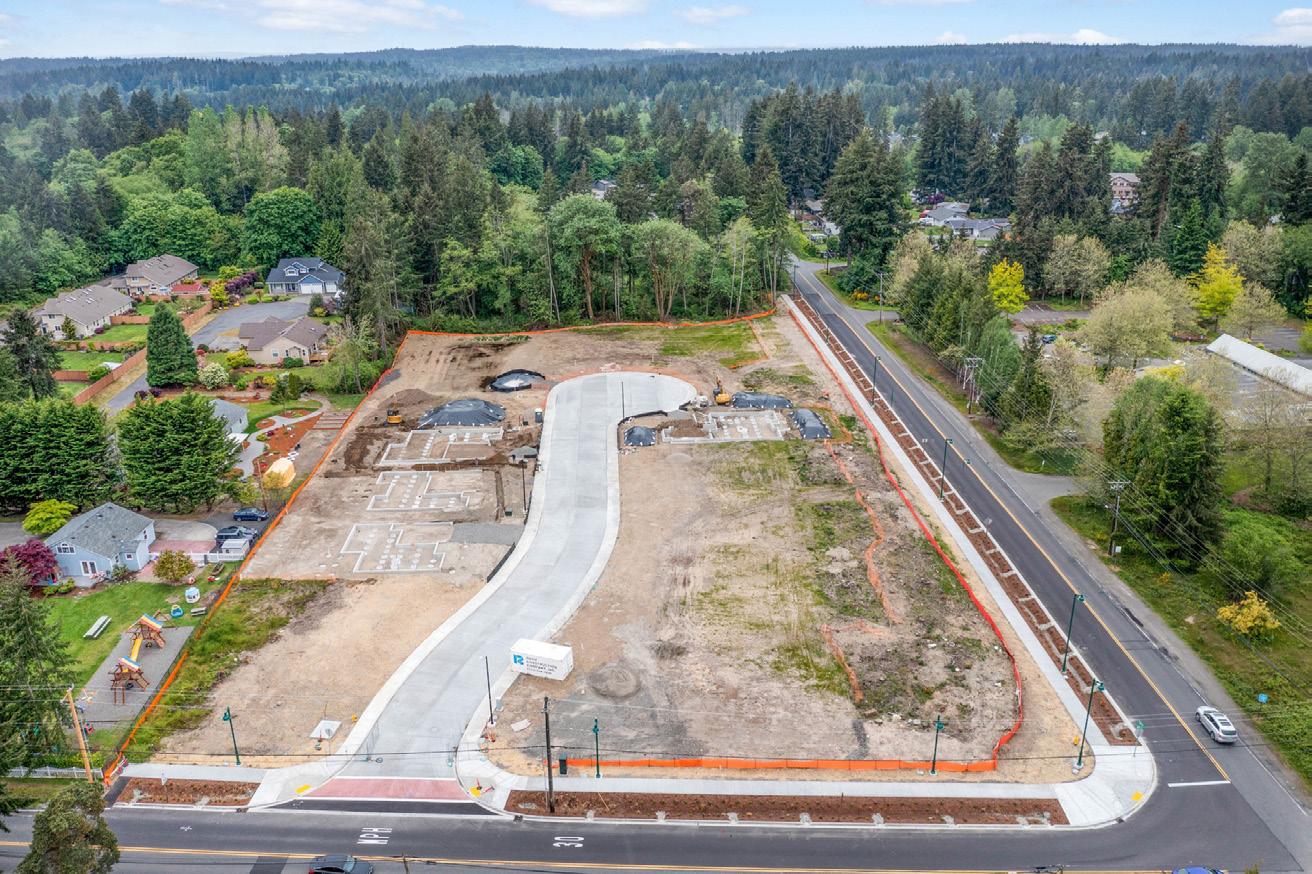
5 minute read
Want to fix Washington’s housing crisis? Let’s focus on getting to “yes”
from 2023 March Building Insight
by BIAW
by Janelle Guthrie Communications Director
While builders have been sounding the alarm for years, the governor and state lawmakers are finally recognizing that the state’s housing and homelessness crisis is largely due to a dramatic lack of housing supply.
In the 30 years since legislators adopted Washington’s Growth Management Act, the state’s population has grown by 60 percent while the number of housing units increased by just 33 percent. According to the Lt. Governor’s report, “Redefining Economic Success in Washington,” the state has the fewest number of housing units per household of any state in the country.
Challenge Seattle estimates Washington needs roughly 2.5 million more homes by 2050. If builders are ever going to meet this goal, the state’s approach to building housing must dramatically change.
Barriers at every step of the process
Master Builders Association of Pierce County Past President Scott Walker, Certified Builder, says to help builders develop more housing for the Washington families who desperately need homes, regulators need to reduce barriers and change their attitudes toward home builders.
Vice president at Rush Residential, Walker has been working for the last 18 months to secure preliminary plat approval for a modest development of 20 homes in unincorporated Pierce County near Gig Harbor. The property already has access to the water and sewer infrastructure necessary to build, but it’s taken 18 months and he’s still waiting for a hearing to approve the development.
Once he passes that hurdle, it’s on to the permitting process. According to BIAW’s recent report on the permit delays, Pierce County’s average permit approval delay is 7.8 months, adding roughly $46,864 to the cost of a median-priced new home. And that’s just the average. Walker says he generally allows 12 to 24 months. There’s no way to predict with certainty when the project will move forward. Once it clears the permitting phase, the project will enter the development phase which Walker estimates could take up to 12 months.
Finally, after clearing all those hurdles, Rush Residential can schedule crews to build their new community and provide homes for 20 families.
Meeting the state’s housing challenges
Builders across Washington face similar frustration. How can the state’s builders possibly produce 2.5 million more homes when they face barriers such as these at every step of the process?
“Leadership can identify goals,” Walker said. “But they need to set a tone from the top all the way to the local permit counter. Jurisdictions need to consider what’s best for the community, then employ some flexibility to help us work together to get to “yes,” instead of digging through every possible objection to get to “no.”
Companies like Rush Residential invest their time and money in new developments such as these to help provide families in their community an opportunity to achieve their dreams of home ownership, Walker said.
But these investments involve a great deal of risk, especially in uncertain times when inflation, costly energy code requirements, fluctuating material costs, supply chain issues and labor shortages continue to plague the industry.
“The market is ever-changing,” Walker said. “Time is one of the biggest risk factors. That’s why it’s so important to treat builders like customers who are good for your community, trying to build quality homes.”
Getting to “yes”
BIAW’s External Affairs team looks to experiences such as Walker’s to help legislators understand the barriers to home building in Washington. At the local level, local association governmental affairs staff work with members to illustrate these issues for local jurisdictions at meetings and homebuilding tours.
Earlier this year, a bi-partisan coalition of legislators announced support for a variety of pro-housing bills, including measures to: n Develop more certainty in local project review to reduce permitting delays and provide flexibility with accountability to local governments (HB 1519) n Replace unelected design review boards with administrative design reviews by local government employees to break down unnecessary barriers during the design phase of a housing project(HB 1026) n Increase housing options by allowing property owners more opportunities to split their lots (HB 1245/SB 5364) n Amend reporting requirements for project permit application processing timelines to improve transparency and accountability (HB 1449)
Scott Walker, Rush Residential
n Eliminate duplicate reviews once a development has been approved under the Growth Management Act (SB 5412)
Sen. John Braun, R-Centralia, also introduced a bi-partisan bill requiring local governments to approve the construction of enough new homes to meet their share of the state’s housing shortage through 2033.
Several bills supported by the governor to address housing challenges continue to move through the legislature as well. One would consolidate local permit review processes (HB 1296 / SB 5290) and another promotes development near transit hubs (SB 5466).
All of these measures passed the legislature’s first committee cutoff, and all of them support efforts to build the housing our state needs. Whether the legislature and local jurisdictions can truly get to “yes” remains to be seen, but they’ll never make a dent in our state’s housing crisis unless they do.
Legislators need to hear from you! BIAW’s External Affairs team tracks upcoming legislative hearings and provides guidance to help you share your views on important bills each week. Stay in the loop at biaw.com/ legislative-action-center.
You can also text “BIAW” to 50457 to sign up for text message action alerts. Save (360) 215-8655 as BIAW in your contact list.







